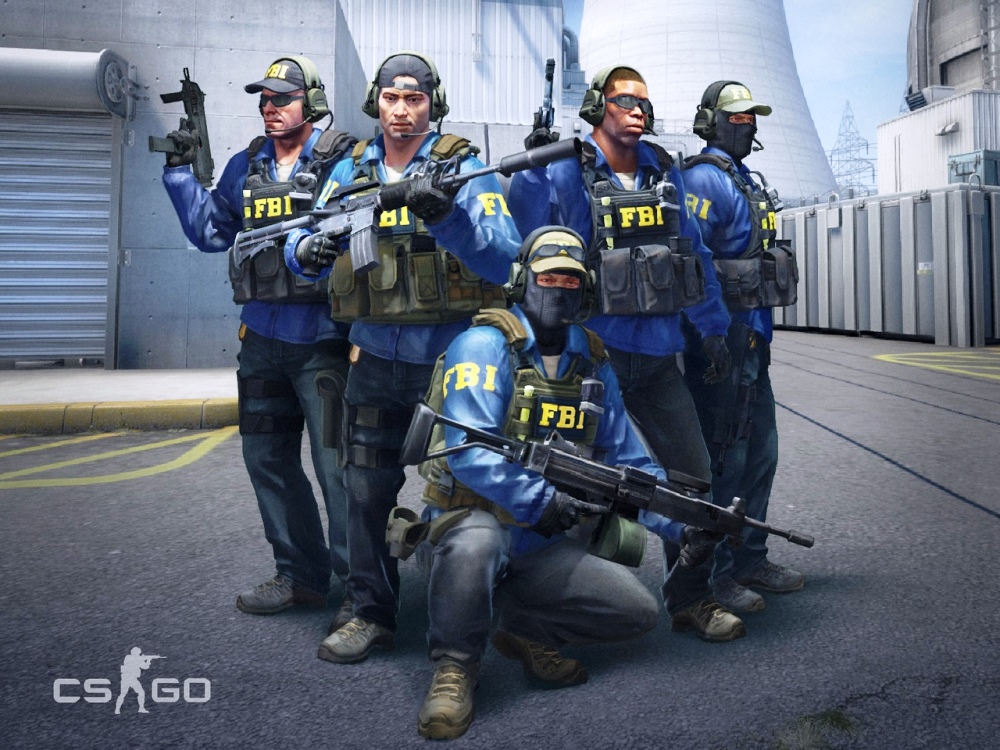
There are practice-proven CS:GO game settings that show the best efficiency:
- Mouse Sensitivity: This is a crucial setting that can greatly influence your performance. The “right” sensitivity depends on personal preference and playstyle, but most professional players use a setting between 1.5 – 3.5 at 400 DPI (Dots Per Inch).
- Aspect Ratio and Resolution: Many pro players use a 4:3 aspect ratio because they come from older Counter-Strike versions, but a 16:9 ratio gives you a wider field of view. It depends on your comfort and preference. Resolution is largely dependent on your system’s ability, although some players still prefer lower resolutions like 1024×768 for higher frame rates.
- Graphics Settings: Lower settings may increase performance and frame rate. Some players reduce the complexity of the visuals to make enemy players stand out more. For example, turning off “FXAA Anti-Aliasing” can make the image clearer and enemies easier to spot.
- Viewmodel Settings: This setting determines where your gun aligns on your screen, which can influence visibility. Here is an example of a commonly used setup:
- viewmodel_fov “68”
- viewmodel_offset_x “2.5”
- viewmodel_offset_y “0”
- viewmodel_offset_z “-1.5”
- viewmodel_presetpos “0”
- cl_viewmodel_shift_left_amt “1.5”
- cl_viewmodel_shift_right_amt “0.75”
- Sound Settings: CS:GO is a game where sound information is crucial. Make sure to have a good headset and adjust the sound to be able to hear footsteps and gunfire clearly. Some players recommend enabling “3D Audio Processing” for a better spatial understanding of sounds.
- Crosshair Settings: Your crosshair is essential for aiming and accuracy. There are numerous customization options available, and the “right” settings vary significantly among players. Consider trying different styles, sizes, and colors to see what works best for you.
- Network Settings: These settings can also have a significant impact on your gameplay. Make sure to use these commands for optimal network settings:
- cl_interp “0”
- cl_interp_ratio “1”
- cl_cmdrate “128”
- cl_updaterate “128”
- rate “786432” (if your internet connection is stable and fast enough)
- Radar Settings: Adjusting your radar to show the entire map can be very beneficial for your game sense. Try these settings:
- cl_radar_always_centered “0”
- cl_radar_scale “0.3”
- cl_hud_radar_scale “1.15”
- cl_radar_icon_scale_min “1”
- cl_radar_rotate “1”
Remember, these are only recommendations and may not work for everyone. It’s always a good idea to experiment with different settings and find out what works best for you.

Mouse Sensitivity
Mouse sensitivity in video games like CS:GO (Counter-Strike: Global Offensive) determines how quickly your cursor or crosshair moves across the screen. This is an important setting because it impacts your ability to aim and react quickly.
Here’s how to adjust your mouse sensitivity in CS:GO:
- In-Game Sensitivity: This can be adjusted within CS:GO itself. Navigate to the game’s options menu, click on the “Keyboard / Mouse” tab, and adjust the “Sensitivity” slider to your liking. As I mentioned earlier, most professional players use a setting between 1.5 – 3.5.
- DPI Settings: DPI stands for “dots per inch,” and it’s a measure of how sensitive a mouse is. A higher DPI means the cursor has a greater ability to respond to small movements. You can adjust the DPI through your mouse’s specific software (if it’s a gaming mouse). Most pros use 400-800 DPI, but this can vary based on personal preference.
Remember, the “correct” mouse sensitivity largely depends on personal preference and play style. If you find that you’re overshooting your target, your sensitivity might be too high. Conversely, if you can’t turn around quickly enough, it might be too low. It can take time to find the right balance, so don’t be afraid to experiment and adjust as needed. Aiming consistency is key in a game like CS:GO, so finding a comfortable sensitivity that allows you to aim accurately is important.
It’s also worth noting that a large mouse pad and a good gaming mouse can also make a difference to your aim in FPS games like CS:GO. Finally, practice is key – the more you play with your chosen sensitivity, the better your muscle memory will become, improving your aim over time.
Aspect Ratio and Resolution
Aspect ratio and resolution are important settings in games like CS:GO (Counter-Strike: Global Offensive) because they can significantly impact your field of view and game performance.
- Aspect Ratio: This is the ratio of the width to the height of the game screen. The most common aspect ratios are 4:3, 16:9, and 16:10. 4:3 aspect ratio will give you a narrower field of view but bigger and more concentrated visuals, potentially making it easier to focus on targets. The 16:9 aspect ratio will give you a wider field of view, which can help you see enemies at the edge of your screen that would be cut off in 4:3. The “best” aspect ratio depends on your personal preference, monitor size, and performance capabilities.
- Resolution: The resolution is the number of pixels displayed on your screen. A higher resolution like 1920×1080 will give you sharper images but can be more demanding on your computer and result in lower FPS (frames per second). A lower resolution like 1280×720 or 1024×768 will result in less sharp images, but can improve performance and increase FPS. Many professional CS:GO players use lower resolutions because they’re used to them from older versions of Counter-Strike, or because they want the highest possible FPS.
These settings can greatly affect your gameplay, so you should experiment to find what works best for you. If you have a powerful computer and value visual clarity, a 16:9 aspect ratio with a higher resolution might be best. If your computer is less powerful, or you value performance (FPS) over visuals, a 4:3 aspect ratio with a lower resolution might be better.
Remember that consistency is key in a game like CS:GO, so once you find settings that you’re comfortable with, it’s usually best to stick with them. Constantly changing your settings can disrupt your muscle memory and negatively affect your performance.
Graphics Settings
Graphic settings in Counter-Strike: Global Offensive (CS:GO) can influence both the performance of the game (in terms of frames per second, or FPS) and the clarity of the visuals. Here are some recommendations:
- Resolution: As discussed in the previous response, resolution is crucial. Lower resolutions can provide higher FPS but at the cost of visual clarity.
- Display Mode: Fullscreen is typically the best option for performance.
- Global Shadow Quality: This setting influences how detailed shadows appear. Lowering this setting can improve performance.
- Model / Texture Detail: Lowering this setting can give you a slight FPS boost at the cost of less detailed textures.
- Effect Detail: Lower settings can help increase FPS, but higher settings make certain effects more noticeable. Some players prefer keeping this setting high to notice Molotovs and smokes better.
- Shader Detail: Lower settings can slightly increase FPS. Higher settings make the game look prettier but can make it harder to spot enemies in certain situations.
- Multicore Rendering: You should generally enable this setting if your processor has more than one core, as it allows the game to take advantage of all available cores, improving performance.
- Multisampling Anti-Aliasing Mode: MSAA smoothens the edges of objects and can reduce the “jagged” look of lower resolution settings. However, it’s quite demanding on your system, so consider disabling this if you’re looking for better performance.
- Texture Filtering Mode: This setting affects the sharpness of textures. Lowering this setting can slightly improve performance.
- FXAA Anti-Aliasing: This is less demanding than MSAA but can make the image look a bit blurry. Some players prefer to turn this off to make the game look clearer.
- Vertical Sync: This setting should generally be turned off. It’s intended to reduce screen tearing, but it can cause input lag.
- Motion Blur: This should generally be turned off. It can make fast movements look smoother, but it can also make it harder to see clearly during quick movements.
Remember, these are general recommendations. The best settings depend on your specific system and personal preferences. Always test different settings to see what works best for you. You want the game to run smoothly (high FPS), but you also want the visuals to be clear enough to spot enemies easily.
Viewmodel Settings
Viewmodel settings in CS:GO affect the positioning and movement of your gun on your screen. Some players find that certain viewmodel settings give them a better view of the game or feel more comfortable.
Here’s an explanation of the most important viewmodel settings:
- viewmodel_fov: This is your field of view. The maximum value is “68”. A higher value means you see more of the game world, but your gun will appear smaller and further away.
- viewmodel_offset_x: This moves your gun left or right. Positive values move the gun right, negative values move it left. The maximum value is “2.5” and the minimum is “-2.5”.
- viewmodel_offset_y: This moves your gun forward or backward. Positive values move the gun forward, negative values move it back. The maximum value is “2.5” and the minimum is “-2.5”.
- viewmodel_offset_z: This moves your gun up or down. Positive values move the gun up, negative values move it down. The maximum value is “2.5” and the minimum is “-2.5”.
- viewmodel_presetpos: This is a preset position for your viewmodel. It can be “1” (Desktop), “2” (Couch), “3” (Classic), or “0” (Custom). If you set this to anything other than “0”, it will override your custom settings.
- cl_viewmodel_shift_left_amt / cl_viewmodel_shift_right_amt: These settings determine how much your gun moves when moving or jumping. Lower values mean less movement.
Here is a commonly used setup among competitive players:
- viewmodel_fov “68”
- viewmodel_offset_x “2.5”
- viewmodel_offset_y “0”
- viewmodel_offset_z “-1.5”
- viewmodel_presetpos “0”
- cl_viewmodel_shift_left_amt “1.5”
- cl_viewmodel_shift_right_amt “0.75”
But remember, these settings are largely a matter of personal preference. It’s a good idea to experiment and find out what you’re most comfortable with.
Sound Settings
Sound is an integral part of CS:GO (Counter-Strike: Global Offensive) as it provides crucial information about the enemy’s position and actions.
Here are some important sound settings:
- Master Volume: This is a preference setting, but it’s generally recommended to keep it high enough that you can hear footsteps, gunshots, and other important audio cues clearly.
- Music Volume: Most competitive players prefer to turn down or even mute the music so they can hear gameplay sounds more clearly.
- Ten Second Warning Volume: This is the music that plays when there are 10 seconds left in the round. Some players prefer to keep this turned on (but not too loud) as an auditory reminder of the round’s time limit.
- Enable 3D Audio Processing: Enabling this setting can improve your ability to pinpoint the locations of sounds in the game world. This can give you a significant advantage by letting you know where enemies are coming from.
- Speaker Configuration: If you have a surround sound setup, you can choose the appropriate option here for the best audio experience. However, many players stick to the “Headphones” option for the best directional audio.
Remember to use a good quality pair of headphones. In a game like CS:GO where audio cues are so important, a good pair of headphones can make a big difference.
Finally, the volume of your operating system and the volume settings of any voice communication software you’re using should be adjusted in harmony with the game’s sound settings. For instance, if you’re using Discord or a similar app to communicate with teammates, make sure it’s not so loud that it drowns out the game sounds.
Crosshair Settings
The crosshair in CS:GO (Counter-Strike: Global Offensive) is a crucial part of your interface, helping you aim and identify where you’re currently pointing your weapon. Configuring your crosshair properly can improve your accuracy and overall performance.
Here’s a basic rundown of the most important crosshair settings and what they do:
- cl_crosshairalpha: This changes the transparency of your crosshair. The value can range from 0 (completely transparent) to 255 (completely opaque).
- cl_crosshaircolor: This changes the color of your crosshair. The value can range from 0-5, with each number corresponding to a different color. You can also use “cl_crosshaircolor_r”, “cl_crosshaircolor_g”, and “cl_crosshaircolor_b” to set a custom RGB color.
- cl_crosshairsize: This changes the size of the crosshair. Higher values result in a larger crosshair.
- cl_crosshairthickness: This changes the thickness of the crosshair. Higher values result in a thicker crosshair.
- cl_crosshairgap: This changes the distance between the lines in the crosshair. Higher values result in a larger gap.
- cl_crosshairstyle: This changes the style of the crosshair. The value can range from 0-5, with each number corresponding to a different style. The most commonly used styles are 4 (static) and 5 (dynamic).
- cl_crosshairdot: This adds (1) or removes (0) a dot in the middle of your crosshair.
- cl_crosshair_drawoutline: This adds (1) or removes (0) an outline to your crosshair.
Remember, the “best” crosshair depends a lot on personal preference. It’s a good idea to experiment with different settings and see what you’re most comfortable with. You can also try using online crosshair generator tools that let you see what your crosshair will look like before you apply the settings in-game.
One common method to discover the crosshair settings of professional players is to download their config files, which are often shared publicly. This could be a starting point to find a setup that suits you, but keep in mind that what works for one player may not work for another. Adjusting these settings according to your personal preference is crucial.
Network Settings
Network settings are crucial for an optimal CS:GO (Counter-Strike: Global Offensive) experience, especially when playing online. They can affect your ping, lag compensation, and hit registration.
Here’s a brief guide to some important network settings:
- rate: This setting determines the total amount of bandwidth CS:GO can use. You generally want to set this as high as your internet connection can handle. As of my knowledge cutoff in September 2021, the maximum value for this setting is “786432” (which corresponds to a 6 Mbps connection), and this is the recommended value if you have a good internet connection.
- cl_cmdrate: This setting determines the number of command packets sent to the server per second. The higher the value, the smoother the game should feel, but it also requires more bandwidth. The maximum and recommended value is “128”.
- cl_updaterate: This setting determines the number of packets received from the server per second. Just like cl_cmdrate, a higher value will make the game feel smoother but requires more bandwidth. The maximum and recommended value is “128”.
- cl_interp_ratio: This setting determines how much lag compensation will be performed by the game. The value is usually set to “1” or “2”. “1” is the ideal setting for a stable connection, while “2” is a safer option if you experience packet loss or have an unstable connection.
- cl_interp: This setting also deals with lag compensation. However, it’s generally recommended to leave it at “0”, which lets the game automatically determine the best value based on your cl_updaterate and cl_interp_ratio.
- cl_predict & cl_predictweapons: These settings should be left at “1” (enabled) for the game to predict the results of your input, resulting in a smoother feeling game.
Remember that for optimal performance, you should always play on servers that are geographically close to you, as the further the server, the higher your ping will be. High ping can lead to lag and a frustrating gaming experience. Also, ensure your internet connection is as stable as possible. Unstable connections can lead to packet loss and high ping, both of which can negatively affect your CS:GO experience.
Radar Settings
In CS:GO, the radar is a crucial tool for maintaining awareness of the overall game situation. Adjusting the radar settings to fit your personal preference can provide significant advantages during gameplay.
Here are some useful radar settings and what they do:
- cl_radar_always_centered “0”: This command stops your radar from always being centered on you. With this setting, you can see a larger portion of the map.
- cl_radar_scale “0.3” – “1”: This command changes how zoomed in the radar is. A lower value will zoom the radar out so you can see more of the map, while a higher value will zoom it in. The exact value that works best for you will depend on your personal preference and your monitor’s size and resolution.
- cl_radar_icon_scale_min “1”: This command increases the size of the icons on the radar. The larger the value, the larger the icons.
- cl_hud_radar_scale “1.15”: This command changes the size of the radar HUD. Increase the value to make the radar bigger, or decrease it to make the radar smaller.
- cl_radar_rotate “1”: This setting allows the radar map to rotate as your character rotates. Some players prefer to set this to “0”, which makes the map static, but it’s a matter of personal preference.
- cl_radar_square_with_scoreboard “1”: When you open the scoreboard, the radar will become square, allowing you to see the whole map.
Remember to adjust these settings based on your personal preference and playstyle. Experiment with different values to find out what works best for you. You want your radar to provide a clear and accurate representation of the game situation without being too distracting or taking up too much screen space.


